Brian DeCost
Learning material synthesis-process-structure-property relationship by data fusion: Bayesian Coregionalization N-Dimensional Piecewise Function Learning
Nov 20, 2023Abstract:Autonomous materials research labs require the ability to combine and learn from diverse data streams. This is especially true for learning material synthesis-process-structure-property relationships, key to accelerating materials optimization and discovery as well as accelerating mechanistic understanding. We present the Synthesis-process-structure-property relAtionship coreGionalized lEarner (SAGE) algorithm. A fully Bayesian algorithm that uses multimodal coregionalization to merge knowledge across data sources to learn synthesis-process-structure-property relationships. SAGE outputs a probabilistic posterior for the relationships including the most likely relationships given the data.
Approaches for Uncertainty Quantification of AI-predicted Material Properties: A Comparison
Oct 19, 2023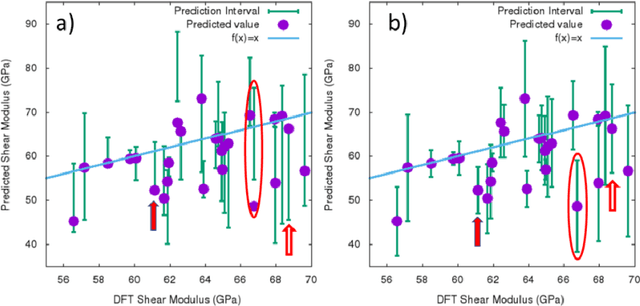


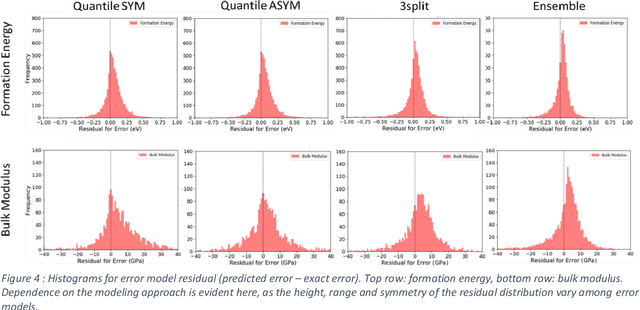
Abstract:The development of large databases of material properties, together with the availability of powerful computers, has allowed machine learning (ML) modeling to become a widely used tool for predicting material performances. While confidence intervals are commonly reported for such ML models, prediction intervals, i.e., the uncertainty on each prediction, are not as frequently available. Here, we investigate three easy-to-implement approaches to determine such individual uncertainty, comparing them across ten ML quantities spanning energetics, mechanical, electronic, optical, and spectral properties. Specifically, we focused on the Quantile approach, the direct machine learning of the prediction intervals and Ensemble methods.
AtomVision: A machine vision library for atomistic images
Dec 05, 2022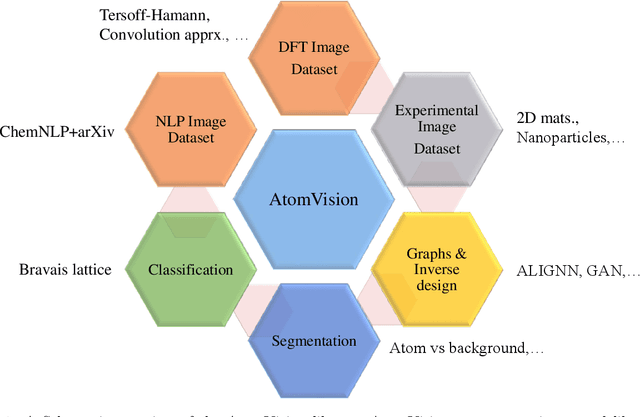
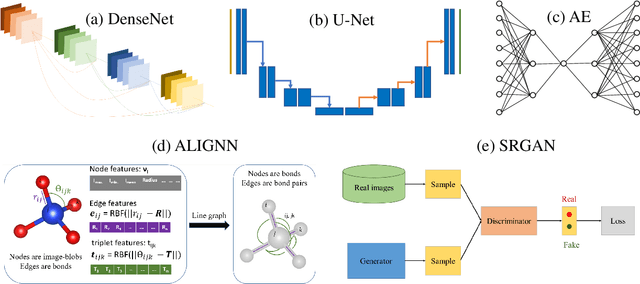
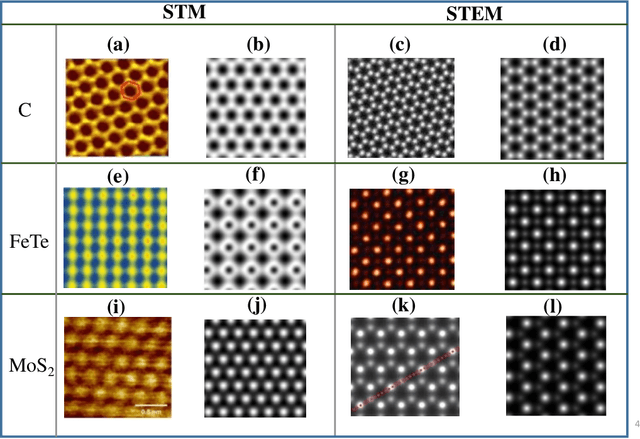
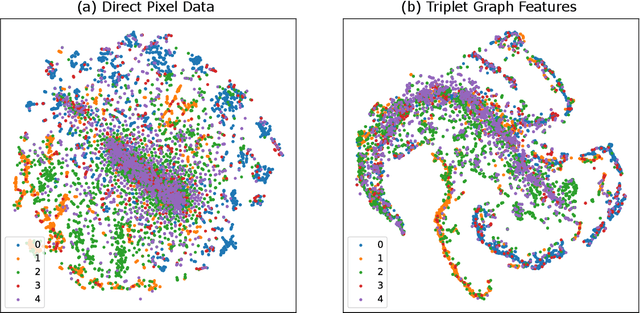
Abstract:Computer vision techniques have immense potential for materials design applications. In this work, we introduce an integrated and general-purpose AtomVision library that can be used to generate, curate scanning tunneling microscopy (STM) and scanning transmission electron microscopy (STEM) datasets and apply machine learning techniques. To demonstrate the applicability of this library, we 1) generate and curate an atomistic image dataset of about 10000 materials, 2) develop and compare convolutional and graph neural network models to classify the Bravais lattices, 3) develop fully convolutional neural network using U-Net architecture to pixelwise classify atom vs background, 4) use generative adversarial network for super-resolution, 5) curate a natural language processing based image dataset using open-access arXiv dataset, and 6) integrate the computational framework with experimental microscopy tools. AtomVision library is available at https://github.com/usnistgov/atomvision.
Physics in the Machine: Integrating Physical Knowledge in Autonomous Phase-Mapping
Nov 15, 2021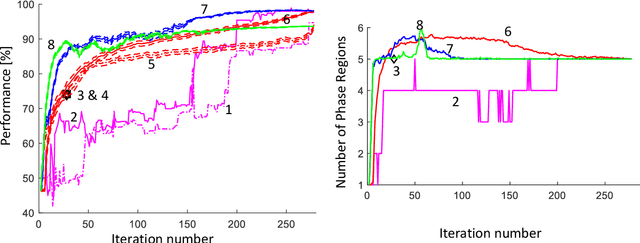
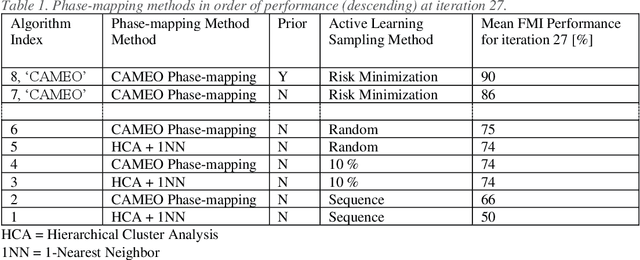
Abstract:Application of artificial intelligence (AI), and more specifically machine learning, to the physical sciences has expanded significantly over the past decades. In particular, science-informed AI or scientific AI has grown from a focus on data analysis to now controlling experiment design, simulation, execution and analysis in closed-loop autonomous systems. The CAMEO (closed-loop autonomous materials exploration and optimization) algorithm employs scientific AI to address two tasks: learning a material system's composition-structure relationship and identifying materials compositions with optimal functional properties. By integrating these, accelerated materials screening across compositional phase diagrams was demonstrated, resulting in the discovery of a best-in-class phase change memory material. Key to this success is the ability to guide subsequent measurements to maximize knowledge of the composition-structure relationship, or phase map. In this work we investigate the benefits of incorporating varying levels of prior physical knowledge into CAMEO's autonomous phase-mapping. This includes the use of ab-initio phase boundary data from the AFLOW repositories, which has been shown to optimize CAMEO's search when used as a prior.
On-the-fly Closed-loop Autonomous Materials Discovery via Bayesian Active Learning
Jun 11, 2020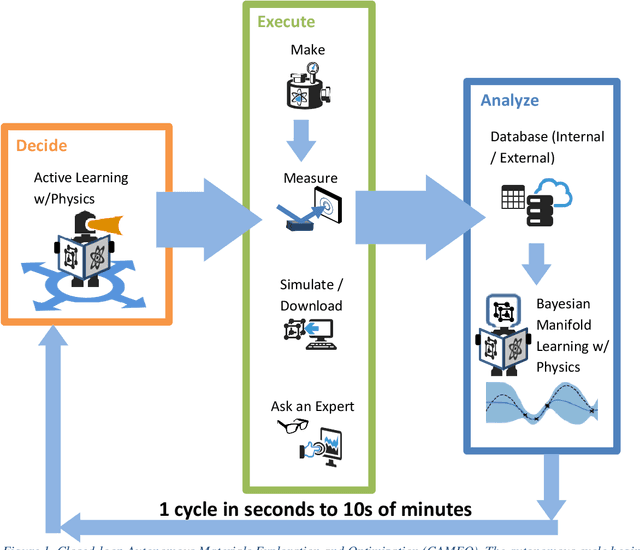
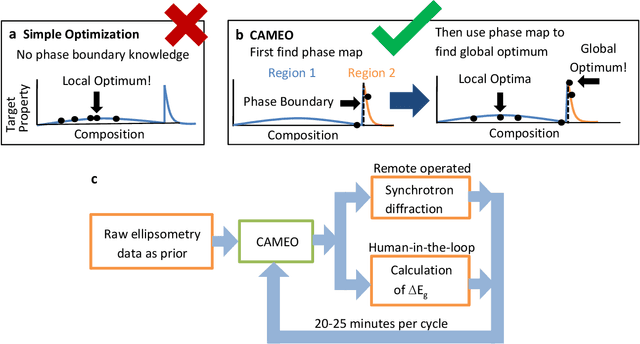
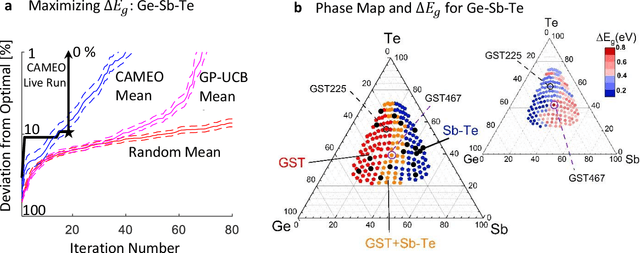
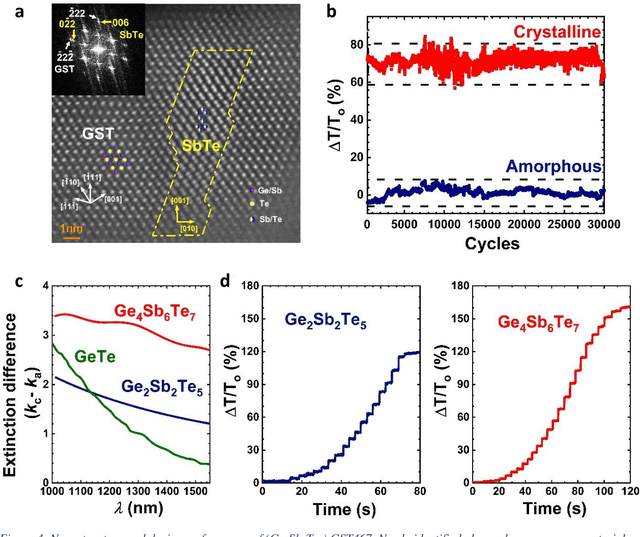
Abstract:Active learning - the field of machine learning (ML) dedicated to optimal experiment design, has played a part in science as far back as the 18th century when Laplace used it to guide his discovery of celestial mechanics [1]. In this work we focus a closed-loop, active learning-driven autonomous system on another major challenge, the discovery of advanced materials against the exceedingly complex synthesis-processes-structure-property landscape. We demonstrate autonomous research methodology (i.e. autonomous hypothesis definition and evaluation) that can place complex, advanced materials in reach, allowing scientists to fail smarter, learn faster, and spend less resources in their studies, while simultaneously improving trust in scientific results and machine learning tools. Additionally, this robot science enables science-over-the-network, reducing the economic impact of scientists being physically separated from their labs. We used the real-time closed-loop, autonomous system for materials exploration and optimization (CAMEO) at the synchrotron beamline to accelerate the fundamentally interconnected tasks of rapid phase mapping and property optimization, with each cycle taking seconds to minutes, resulting in the discovery of a novel epitaxial nanocomposite phase-change memory material.
Building Data-driven Models with Microstructural Images: Generalization and Interpretability
Nov 01, 2017

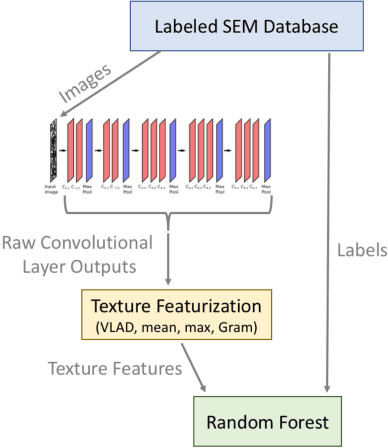

Abstract:As data-driven methods rise in popularity in materials science applications, a key question is how these machine learning models can be used to understand microstructure. Given the importance of process-structure-property relations throughout materials science, it seems logical that models that can leverage microstructural data would be more capable of predicting property information. While there have been some recent attempts to use convolutional neural networks to understand microstructural images, these early studies have focused only on which featurizations yield the highest machine learning model accuracy for a single data set. This paper explores the use of convolutional neural networks for classifying microstructure with a more holistic set of objectives in mind: generalization between data sets, number of features required, and interpretability.
 Add to Chrome
Add to Chrome Add to Firefox
Add to Firefox Add to Edge
Add to Edge